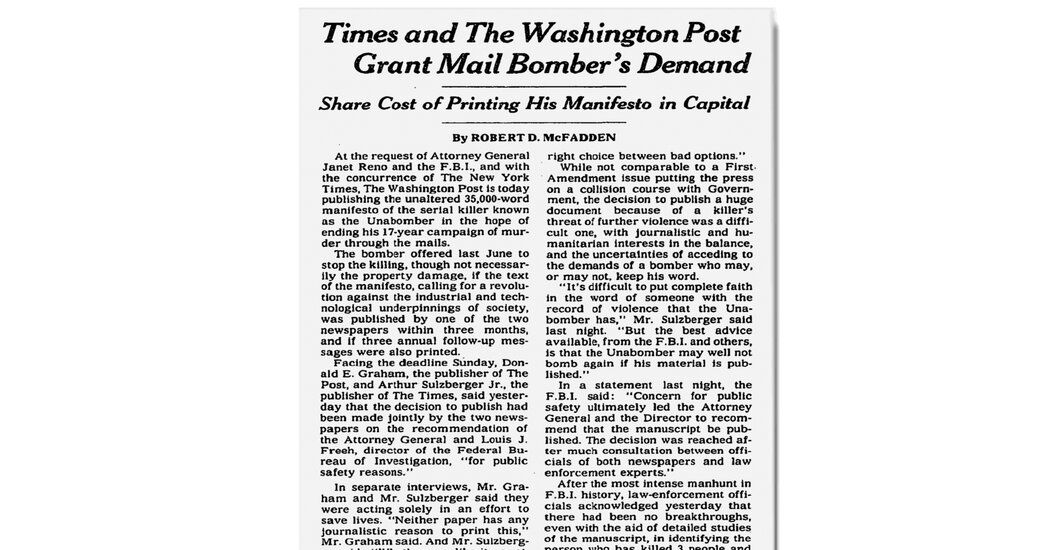Newspapers Printed Unabomber’s Manifesto in 1995. It’s Still Fiercely Debated.
In June 1995, hefty packages arrived in the mail rooms of The Washington Post and The New York Times with identical contents: single-space typed copies of a document called “Industrial Society and Its Future,” with a note from an anonymous sender who said he would kill again unless the newspapers published the manifesto in its entirety within 90 days.
The danger seemed credible. The author claimed to have been responsible for three deaths and dozens of injuries in a mail bombing campaign that had already lasted 17 years, and was increasing in frequency. But if they gave in to the threat, how did the newspapers know the bomber would keep his word — or whether other terrorists would make such demands in the future?
In September of that year, at the urging of the Justice Department and the Federal Bureau of Investigation, the newspapers decided to publish. Because of its weekday printing capabilities, The Post ran the manifesto as an eight-page insert to distinguish it from the regular news and opinion sections; The Times covered half The Post’s costs.
The manifesto provided critical clues to his identity, and six months and two weeks later, the Unabomber — Theodore Kaczynski, who died in a federal prison cell on Saturday — was captured. But to many in the profession, acceding to Mr. Kaczynski’s demands set a terrible precedent, undermining journalistic independence and doing the bidding of law enforcement.
“They don’t know who this guy is, they can’t sue him for breach of contract if he bombs again,” said Jane Kirtley, then the executive director of the Reporters Committee for Freedom of the Press, in a round-table discussion soon after the manifesto’s publication. “They really made a pact with the devil when they have no control ultimately over what he will do or not do.”
Source: The New York Times


